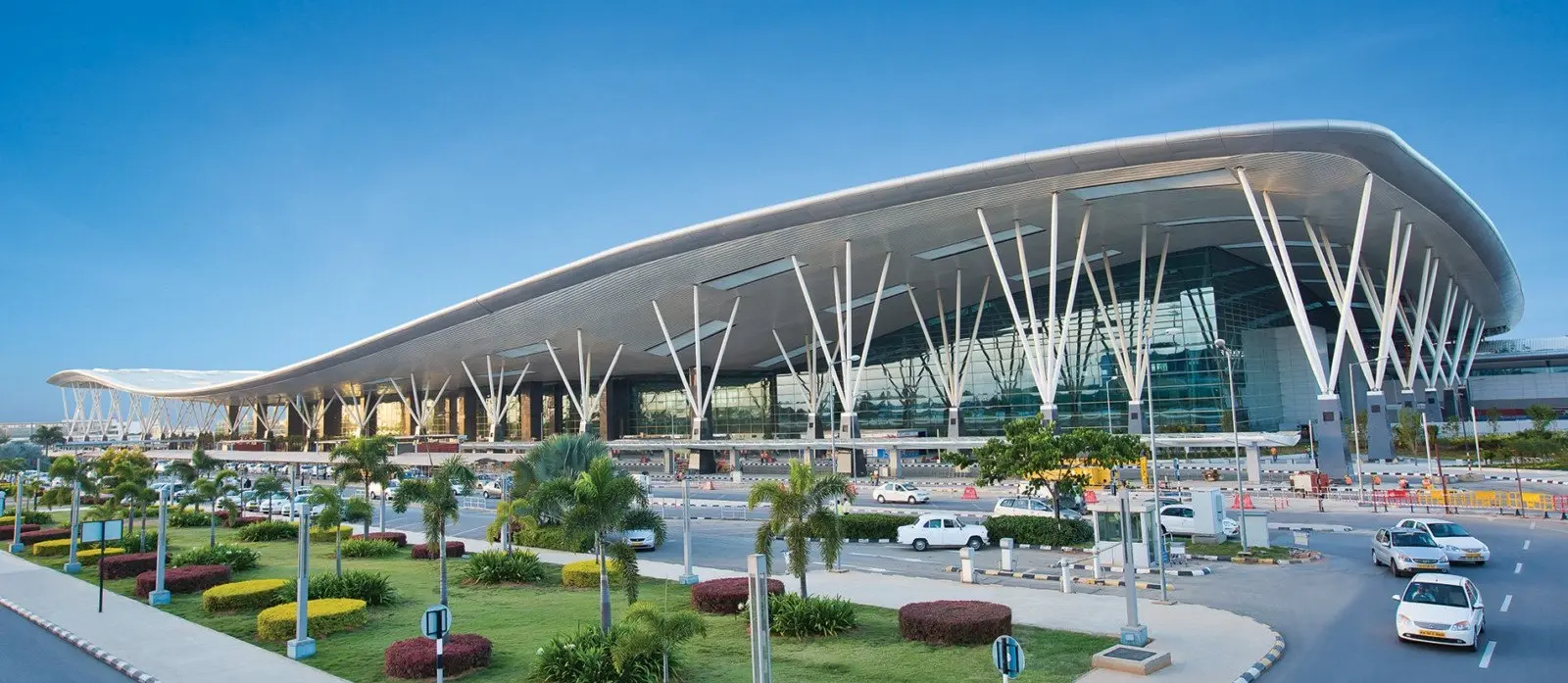There’s something about a challenging project that makes success taste sweeter. The Resurgent team is still basking in the satisfying glow of one such project – the newly constructed Terminal 2 at the Bangalore International Airport (BIAL T2). While media outlets across the country have been reporting stunning details (and images) of the magnificent structure and the dazzling interiors that are taking everyone’s breath away, we at Resurgent have a first-hand account and an up close and personal experience of this massive establishment, as we contributed our tiny bit into making BIAL T2 one of the most technologically and sustainably advanced airports in the country today.
The BIAL T2 Project Scope
Built to handle 25 million passengers per annum in Phase 1 and 45 million passengers per annum in Phase 2, the newly inaugurated terminal is being touted as a magnificent construction marvel.
The 255,000 square meter terminal reflects Bengaluru’s rich culture, history, its nature as the garden city and technology hub of India. Spread over four levels and built on the pillars of biodiversity, sustainability, technology, and art, the terminal allows for seamless departures and easy arrivals while offering a unique and rich experience.
Intelligent networks, automated operations, and IoT-powered systems sit at the foundation of the magnanimous T2, making the terminal a digital masterpiece.
But for a mammoth establishment to keep up with passenger traffic and deliver on expectations, BIAL T2 needed a range of sophisticated control centres to be implemented. Resurgent was awarded the contract to build a Network Operations Control Centre (NOCC),a Baggage Operations Control Centre (BOCC), and a Security Operations Control Centre (SOCC).
The Challenges Faced
Building ground-breaking control centres for BIAL T2 required an advanced level of sophistication and involved extreme technical complexity. In addition, there were many challenges that the Resurgent team faced in bringing the project to successful completion. These included :
- Dealing with the COVID-19 pandemic and the constantly evolving social distancing and quarantine protocols thereafter
- Finding efficient ways to deliver impact while ensuring regular coordination and communication among and between the many different teams and vendors on site.
- Planning for material entries on-site and scheduling deliveries
- The sheer physical distance of the site from the city, especially because other teams or materials were unavailable when the team reached the site..
- Requirements that kept evolving and teams that kept altering, which is expected given the vastness of the project and the timeline.
- Fluctuating scope that led to other issues, including missed deadlines and cost overruns – and exceeded the pre-planned budget.
The Execution Plan
Despite the several challenges we faced during the project, we were able to set up digitally advanced control centres at BIAL. We successfully established mission-critical environments and provided robust infrastructure, enabling BIAL T2 to function efficiently. The user-friendly, real-time, and highly responsive hardware and software allow BIAL to handle passengers with speed and efficiency.
So, what made this possible? For starters, our long-standing partnerships with leading original equipment manufacturers and prestigious industry affiliations enabled us to integrate the latest technology into our offerings and consistently level up our expertise. Moreover, leveraging our experience and skillset in setting up command centres has enabled us to deliver superior end-to-end services that have resulted in high-quality experiences at BIAL.
- The NOCC allows BIAL’s IT and network administrators to centrally supervise, monitor, and maintain their telecommunications network. It allows them to manage and optimize business-critical tasks, troubleshoot issues, and carry out regular performance monitoring and coordination. Teams can also use the NOCC to traverse traffic flows by constantly balancing supply and demand while ensuring the safe and efficient operation of flights.
- With airports being extremely vulnerable to evolving cyber threats, the SOCC implemented by Resurgent offers much-needed protection to passengers and cargo travelling through the facility. Using the SOCC, admin teams can conduct around-the-clock monitoring and engage immediately in incident response. They can better monitor, prevent, detect, investigate, and respond to cyber threats and protect intellectual property, personnel and passenger data, business systems, and brand integrity.
- Given the volume of luggage airports must handle, the BOCC paves the way for timely and efficient baggage handling, contributing to higher passenger comfort. The centre enables BIAL to recognize baggage handling problems at the source and enhance service efficiency by incorporating improved processes, infrastructure, and service management across baggage check-in, sorting, loading, transporting, unloading, and baggage claim procedures.
The Grand Success
Resurgent has many feathers in its cap, but this was the first time we executed a project of this scale and complexity. Implementing multiple command centres under one roof for a prestigious establishment like BIAL has been a real turning point for the company. We faced so many challenges, but we also learned so much over the 2+ years of our involvement in the project.
In the end, we can proudly say that it was all worth it! Today, everyone from the BIAL team looks back at the project as a defining story in their careers (and lives).



